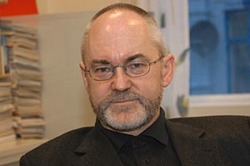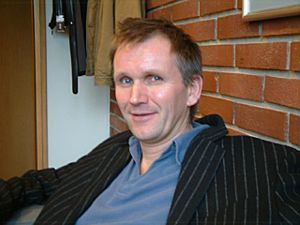Trebling the equal opportunities pot
The rector at the University of Bergen will spend a further 2 million Norwegian crowns on equal opportunities work. This is how Bergen will become a leading university on gender equality.

At the University of Bergen the current representation of women among the professors is 15 per cent, while 33 per cent of assistant professors are women. Now, the rector, Sigmund Grønmo has put equal opportunities high on the agenda. The outcome includes that the allocation to equal opportunities work will be trebled in the budget.
Urgent
Grønmo is concerned that the effort to increase the proportion of women in permanent academic positions must come now. The 1968 generation is approaching retirement age and many academic positions will become vacant.
"It’s a pressing matter to do something with the equal opportunities situation in academia. The opportunity to appoint more women is here now, and we have to grasp it. It is unacceptable to wait one more generation before we achieve a better gender balance at the University of Bergen," underlines Grønmo.
Drop out
But a gender balance is a long way off. And the natural sciences are the worst. In 2004 5 per cent of professors at the Faculty of Mathematics and Natural Science in Bergen were women. The number of women among assistant professors was 13 per cent, while 35 per cent of research fellows were women.
"One problem is that the women who graduate in natural sciences are often recruited to lucrative jobs in private industry," says Jan Petter Hansen, professor of physics, head of institute and leader for the equal opportunities committee at the university.
Want the best
In Hansen’s opinion the low proportion of women is first and foremost a shame for the research community which loses out on research talent.

"Half of the population are women. We want the best of the best and therefore we must choose from a broadest possible selection," he says.
In his opinion traditions within the disciplines are important reasons to why the gender balance is so lopsided in many of the natural sciences.
"In the natural science subjects the number of women among the students is lower than at other institutes. In addition there has been a reduction in permanent academic positions in the years that it has been possible to recruit women from among research fellows."
However, the causes do not only come from outside the institutes, says Hansen. In his opinion work is necessary to change attitudes in institutes that have too low a proportion of women.
"Within the different institutes the desire to increase the proportion of women must be present. If a female student goes through the whole student process with only men for supervisors, this can be demotivating. It is therefore necessary to get to work on this."
Calling is better
Hansen says that 'calling' is an effective strategy. In other words a person is directly chosen for recruitment without prior announcement of the vacancy. With such recruitments it is possible to consciously select qualified women in a field. "This demands that we focus on gender. The objective of increasing the proportion of women must be set before a position is announced, and this must be the wish of the relevant academic community."
In the opinion of the professor a 'calling' process works better than quotas for women for permanent academic positions.
"If we have to set aside the academic committees’ evaluations every time a woman is to be appointed, there will be discord in the community. This is why a changing of attitudes in the different academic communities is important. It’s not good for the women recruited to feel unwelcome," emphasizes Hansen.
He has more faith in positive incentives and rewards for the institutes, but this demands an economic investment in equal opportunities.
Economic prioritizing
Equal opportunities adviser Anne Marit Skarsbø at the university agrees with Jan Petter Hansen and believes that particularly those initiatives in the plan of action that deal with the use of economic means have been effective:

"Equal opportunities work needs not only good intentions, but also economic prioritization," she says.
The equal opportunities adviser has worked for many years on increasing the proportion of women at the University of Bergen. In the equal opportunities action plan money has been earmarked for initiatives on the recruitment of women each year. These funds are used to purchase freedom from teaching and administrative duties, for technical assistance, proofreading and anything else that can lighten the workload of female researchers so that they can qualify for advancement. It is such positive measures that Jan Hansen wishes to see more of.
"If we prepare and make the University of Bergen a modern and attractive workplace for female researchers it will improve gender imbalance. Also the women who are connected with the university will experience the quickest possible career development," he says.
The science women
At the University of Bergen both Hansen and Skarsbø are currently formulating an action plan for equal opportunities where they will introduce measures that are aimed at different disciplines. After working on the gender imbalance for a long time in the natural science communities a network at the university has been formed: The Natural Science Women. Representatives for this network have also taken the initiative for a Nordic network of women in physics, Skarsbø relates. Conferences have been organised and held on women in the natural sciences at the University of Bergen.
"The academic communities need zealots who never forget about equal opportunities," she says. Additionally, she is convinced that a top-heavy effort is necessary.
"If we are going to overcome both the active and the passive resistance against women in academia, every institute head must demonstrate to their staff that this problem is being given priority," concludes Skarsbø.
